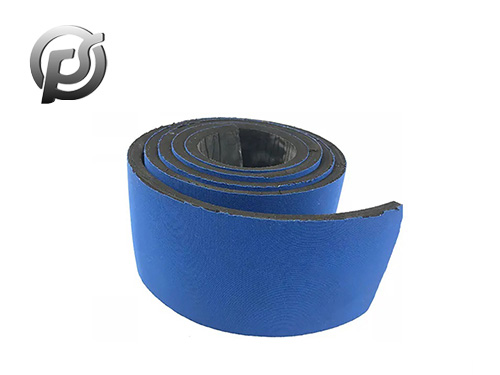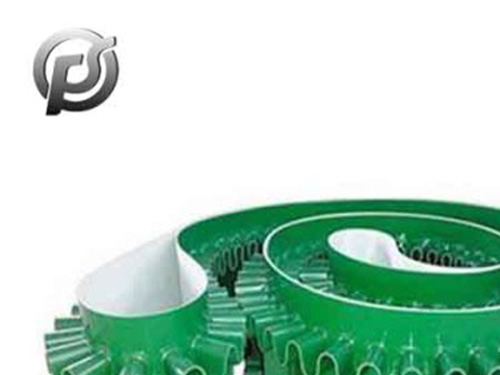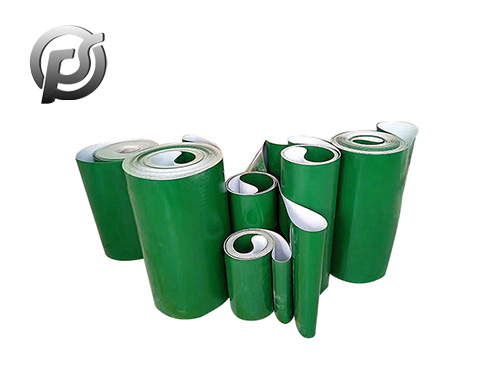If it is necessary to accurately measure the gas transmission performance of the rubber
conveyor belt, the gas that can be used should not make the rubber swelling or corrosion. Under the stable condition of constant pressure on each end face of the tested sample, the basic method is as follows. Before operation, you can also refer to the operation details of the rubber strip ball pressing method for comparison before measurement:
The specific operation key is that we need to keep the air permeability chamber at constant temperature, which is divided into high pressure side and low pressure side by a round sample. The high pressure side is connected to the gas storage device that can maintain constant pressure, and the gas penetrates to the low pressure side. Because the low pressure side has a small volume and the same, the air permeability meter is composed of the air permeability chamber, measuring device and constant temperature device, etc. The air permeability chamber is a device that can clamp the surrounding of the sample in an airtight state. The upper part of the high pressure side is connected with a high precision pressure gauge. The low pressure side is filled with hard and easily breathable microporous hard adhesive pictures, sintered microporous stainless steel discs and other materials to keep the internal volume small and support the sample without deformation. The low pressure side is connected with the capillary with a small diameter pipe through a detachable connector, and the total volume of the cavity between the benchmark scale line should not exceed the specified size. In terms of the constant temperature device, the constant temperature bath or the device that can keep the temperature difference between the breathable chamber and the test temperature within ±0.5℃ can be used. The standard test temperature is 23℃. Generally, it can be selected from the following temperatures: 40, 55, 70, 85, 100, 125, 150, 175, 200, 225 and 250℃, for any specified test or comparative test, the allowable temperature deviation is within ±0.5℃, then can be directly cut from the vulcanized film or rubber products, if there is a ring groove in the ventilation chamber, The upper and lower edges of the molded sample should have annular convex edges, so that they can be fixed to the corresponding annular groove in the breathable chamber. The cut flat sample can be caught in the middle with the appropriate butyl adhesive "O" diagram, and fixed in the breathable chamber to maintain its air tightness. In order to ensure the air tightness, a very small amount of vacuum grease is allowed to be applied on the clamping surface of the breathable chamber. However, there should be no oil contamination on the effective surface of the sample. The thickness of the sample is measured by using a thickness meter at 6 different points on the effective surface of the sample, accurate to 0.02mm. The arithmetic mean value of the 6 measuring points is taken as the thickness value of the sample, and the thickness of each point should not exceed 10% of the average thickness. Then shake the handle to adjust the height of the liquid storage bottle, so that the liquid level is above the reference scale of the capillary to close the bypass. When the bending liquid level is crosscut with the reference scale, the corresponding distance between the time and the bending liquid level is recorded. During the test, the height of the liquid storage bottle should be adjusted at any time to maintain the balance of the liquid level on both sides of the capillary, when the gas penetration reaches a stable state, About every 2min, the corresponding distance of bending liquid level movement was recorded for 5-6 times, and the duration of the test was 10 hours. After the test, the moving distance of bending liquid level and the time parameters were put on the coordinate paper to obtain the accurate relationship curve of the gas permeability of rubber conveyor belt.
 PE Conveyor Belts: Characteristics, Applications, and Advantages
PE Conveyor Belts: Characteristics, Applications, and Advantages
 Stone Conveyor Belt: Enhancing Efficiency and Productivity in Material Handling
Stone Conveyor Belt: Enhancing Efficiency and Productivity in Material Handling
 Optimizing Operations with PE Conveyor Belts: Durability, Efficiency, and Versatility
Optimizing Operations with PE Conveyor Belts: Durability, Efficiency, and Versatility